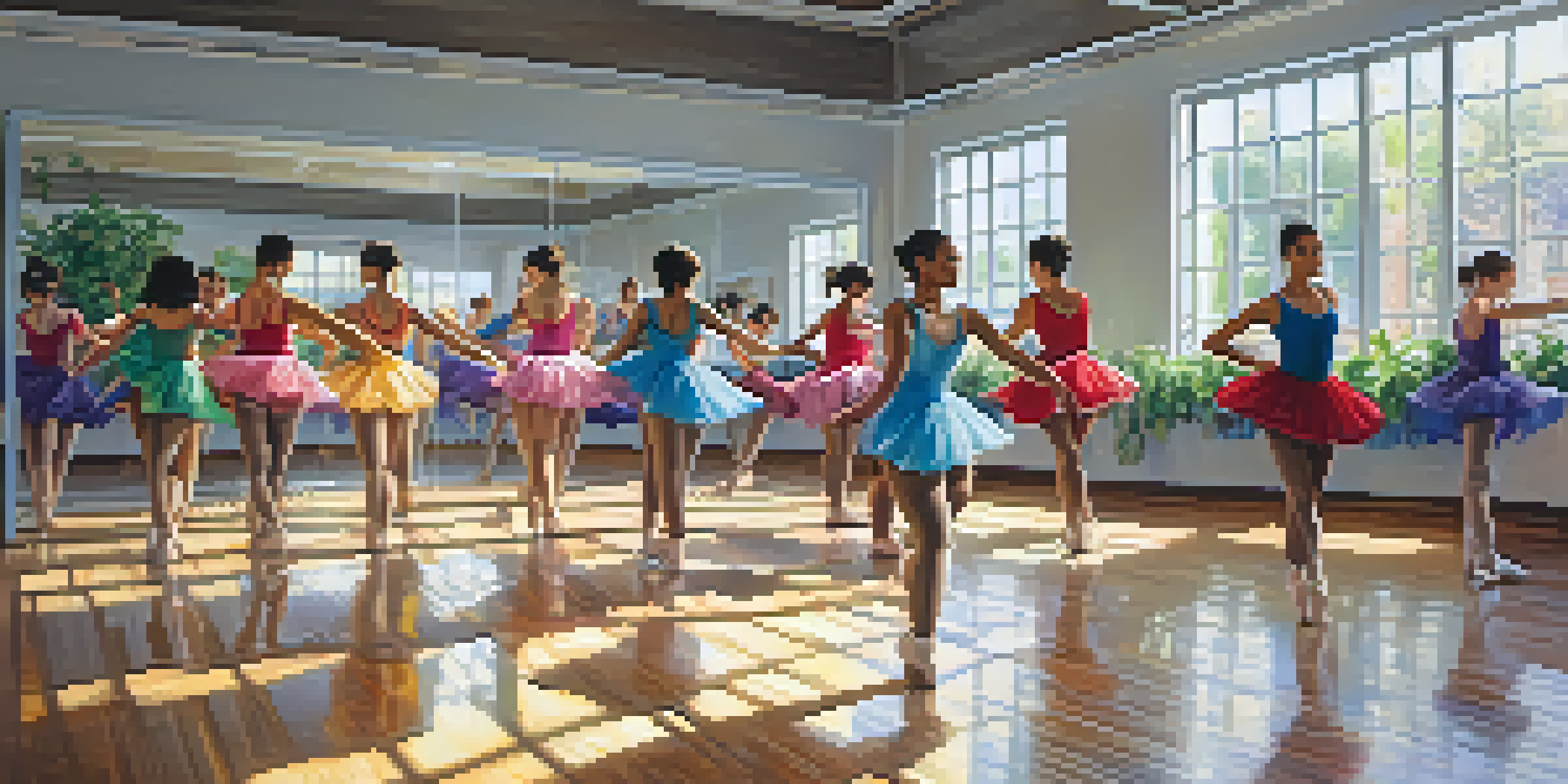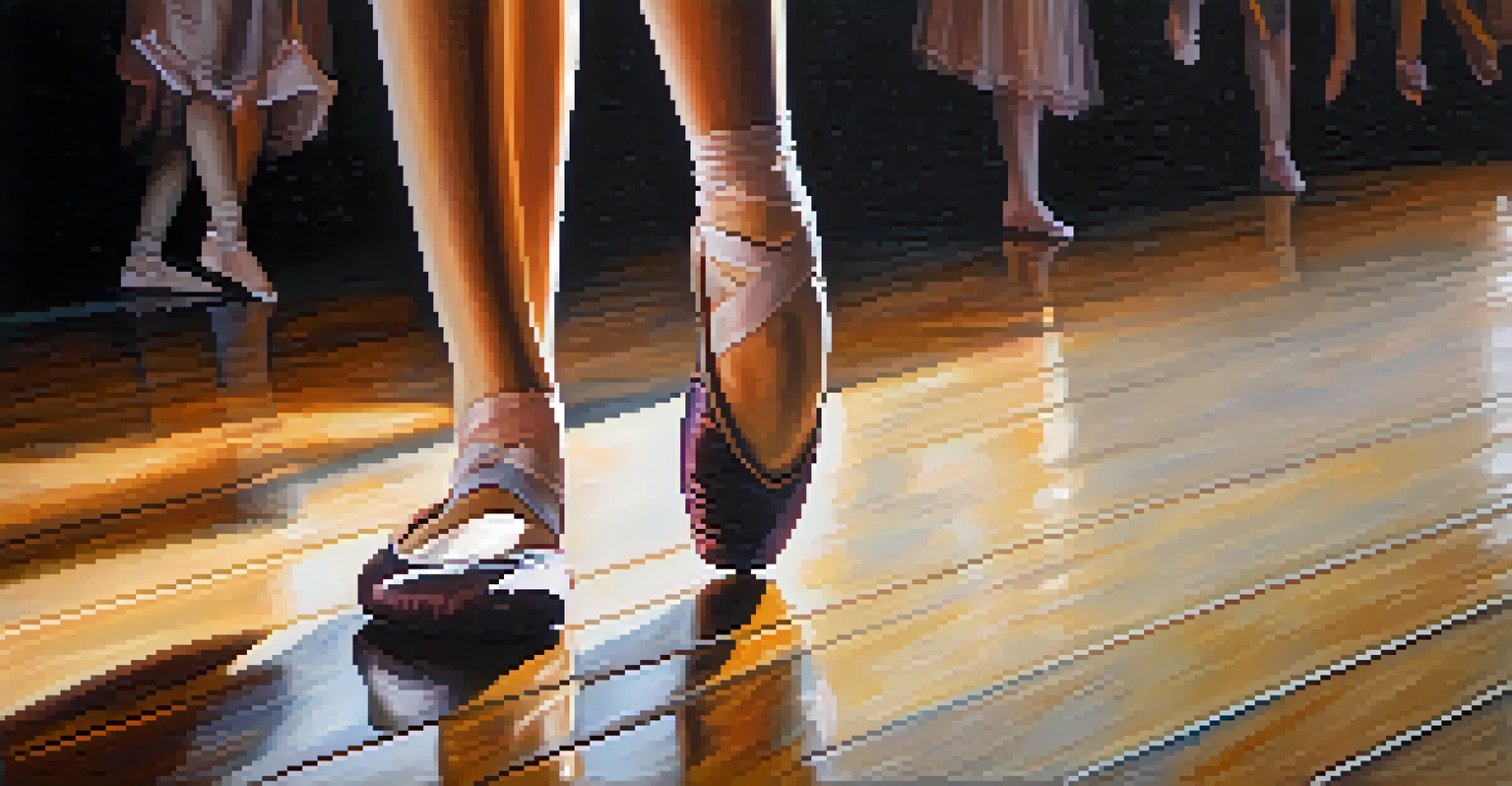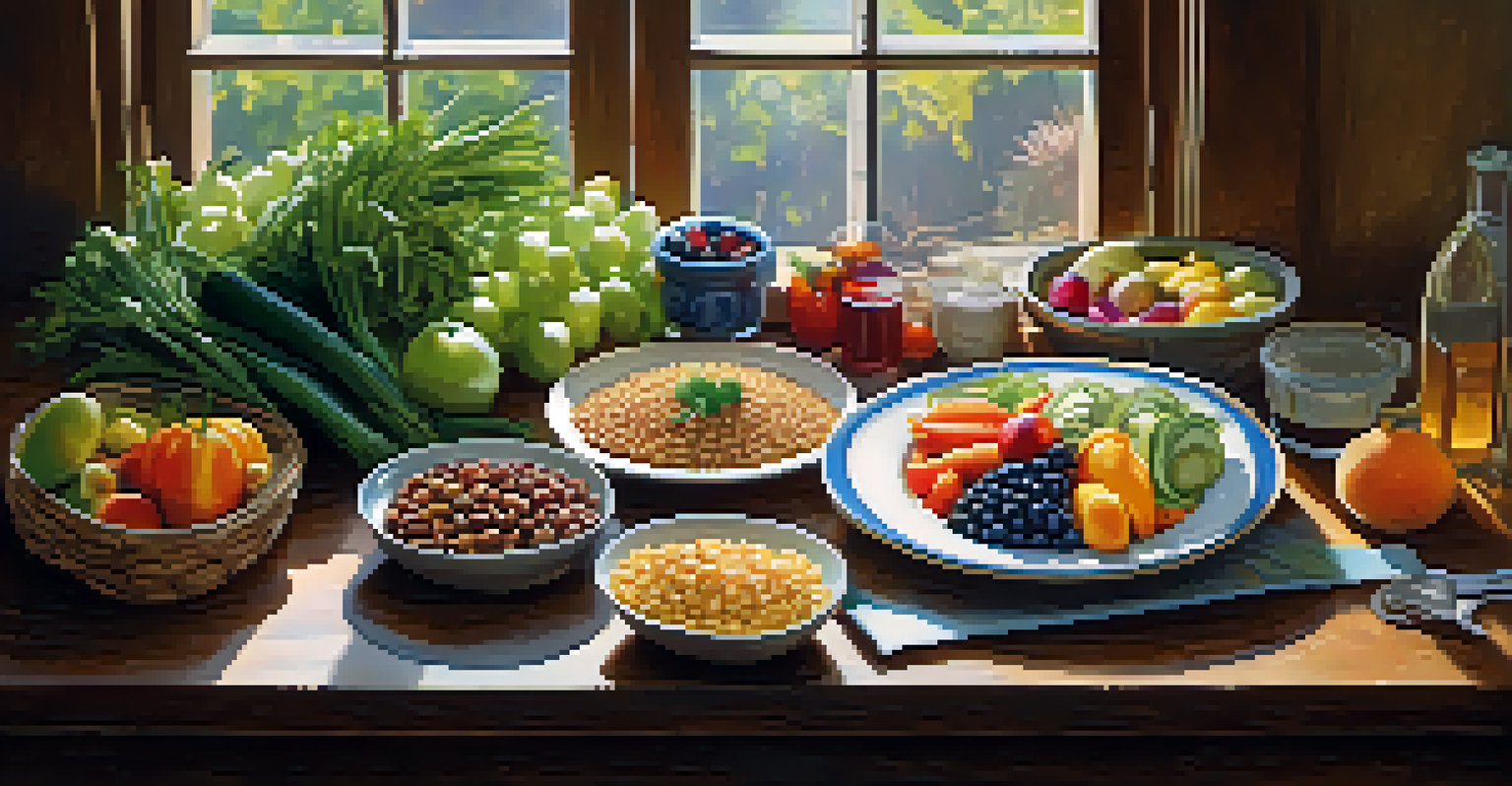Dance and Nutrition: Fueling Your Body for Optimal Performance

Understanding the Connection Between Dance and Nutrition
Dance is not just an art form; it's a physical activity that demands a lot from your body. Just like a car needs fuel to run, dancers need proper nutrition to perform at their best. The connection between dance and nutrition is vital—what you eat can significantly affect your energy levels, stamina, and overall performance.
Dance is the hidden language of the soul.
When dancers fuel their bodies with the right nutrients, they are more likely to execute movements with precision and grace. Think of your body as a finely tuned instrument; it requires regular maintenance and the right materials to produce beautiful music. The right balance of carbohydrates, proteins, and fats will help you hit those high notes in your dance routines.
Moreover, nutrition doesn't just influence performance during practice or performances; it also plays a role in recovery. Proper nutrition helps reduce muscle soreness and fatigue, allowing dancers to bounce back faster for their next rehearsal or show.
Key Nutrients for Dancers: What You Need
Just like a well-rounded diet is essential for everyone, some key nutrients are especially important for dancers. Carbohydrates are your primary source of energy, so think whole grains, fruits, and vegetables. These foods provide the fuel your muscles need to perform demanding routines without hitting that dreaded wall.

Proteins are equally crucial, as they help repair and build muscle tissue. Lean meats, dairy products, and plant-based protein sources like beans and lentils are great choices. Incorporating these into your meals will support muscle recovery and growth, which is essential for any dancer aiming for peak performance.
Nutrition Fuels Dance Performance
Proper nutrition is essential for dancers, as it directly impacts energy levels, stamina, and overall performance.
Don't forget about fats, which are vital for hormone production and overall health. Healthy fats from sources like avocados, nuts, and olive oil help keep your energy levels stable throughout long practice sessions. A balanced intake of these nutrients ensures your body is ready for any dance challenge that comes your way.
Hydration: The Unsung Hero of Dance Nutrition
When it comes to nutrition, hydration often takes a backseat, but it plays a crucial role in performance. Dancers lose a significant amount of water through sweat, and staying hydrated is essential for optimal muscle function and energy levels. Think of water as the oil that keeps the engine running smoothly—without it, you’re bound to face some serious performance issues.
You are your best thing.
Dehydration can lead to fatigue, decreased coordination, and even injury, making it vital for dancers to drink water consistently throughout the day. A simple rule of thumb is to sip water before, during, and after your dance sessions. You can also incorporate hydration-rich foods like cucumbers, watermelon, and oranges to help meet your hydration needs.
Listening to your body is key; if you’re feeling thirsty, it’s a sign you need to hydrate. By prioritizing your water intake, you’ll ensure your body is well-prepared to take on the demands of dance, allowing you to shine on stage.
Timing Your Meals: When to Eat for Peak Performance
The timing of your meals can significantly impact your energy levels and performance in dance. Eating a balanced meal about 2-3 hours before practice or a performance provides your body with the fuel it needs for sustained energy. This meal should include a mix of carbohydrates, proteins, and healthy fats to optimize performance.
If you’re short on time, a smaller snack 30-60 minutes before dancing can also be beneficial. Think of a banana with nut butter or a small yogurt—these quick bites provide a fast source of energy without weighing you down. It’s all about finding what works best for your body and routine.
Hydration is Crucial for Dancers
Staying hydrated is key for optimal muscle function and energy, helping dancers avoid fatigue and injury.
After dancing, don’t forget to refuel with a nutritious meal or snack that includes protein and carbohydrates to aid recovery. This will help replenish your energy stores and repair any muscle damage, setting you up for success in your next session.
The Role of Supplements in a Dancer's Diet
While a well-rounded diet is the best way to meet your nutritional needs, some dancers consider supplements to enhance performance. Vitamins and minerals can play a role in supporting overall health, especially if you have specific dietary restrictions. However, it’s crucial to approach supplements with caution and do thorough research before adding them to your routine.
Consulting with a healthcare professional or a registered dietitian can help you determine which supplements, if any, may benefit you. For example, if you find it challenging to meet your calcium needs through food alone, a calcium supplement might be a good addition. Just remember, supplements should complement a nutritious diet, not replace it.
Ultimately, the focus should be on whole foods first. Dancers can often get all the vitamins and minerals they need through a varied diet that includes plenty of fruits, vegetables, whole grains, and lean proteins, keeping the reliance on supplements to a minimum.
Listening to Your Body: Nutrition and Intuition
One of the most important aspects of fueling your body as a dancer is learning to listen to your own hunger cues. Every dancer’s body is unique, and what works for one person may not work for another. Developing an intuitive sense of what your body needs can help you make better food choices and ensure you’re properly fueled for your dance practices.
Pay attention to how different foods make you feel during and after dancing. If you notice that a particular meal gives you energy and enhances your performance, take note and make it a staple. Conversely, if you feel sluggish after consuming certain foods, it might be worth reevaluating your choices.
Listen to Your Body's Needs
Developing an intuitive understanding of your body's hunger cues can help dancers make better food choices for their unique performance needs.
Remember, nutrition is not just about strict rules; it’s about finding a balance that supports your body and your goals. Embrace the journey of self-discovery, and trust that your body will guide you towards the nutrition that works best for you.
Conclusion: Nourishing Your Passion for Dance
In conclusion, nutrition plays a fundamental role in a dancer's performance, recovery, and overall health. By understanding the connection between what you eat and how you dance, you can make informed choices that enhance your abilities. The right balance of nutrients, hydration, and meal timing can elevate your performance and keep you feeling your best.
As you embark on your dance journey, remember that nutrition is a personal experience—what works for one dancer may not work for another. Embrace the diversity of foods and listen to your body’s needs to create a nourishing routine that fuels your passion for dance.

Ultimately, by prioritizing nutrition, you’re not just investing in your performance; you’re also nurturing your love for dance and ensuring a long, healthy career. So lace up those dance shoes and get ready to shine, knowing that your body is fueled and ready to take on the world!